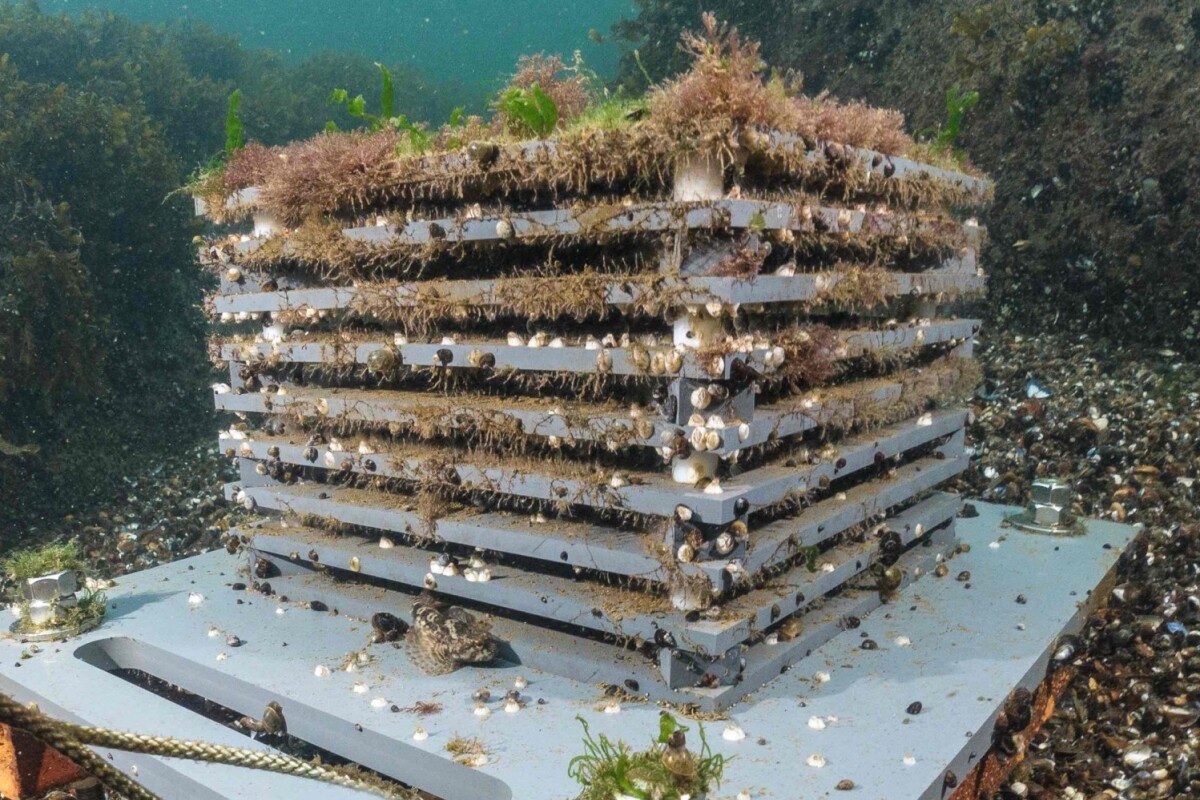While it's important for biologists to know which organisms have colonized the seabed in a given area, excavation is both labor-intensive and ecologically unsound. That's where the Autonomous Reef Monitoring Structures – or ARMS – are made to come in.
The ARMS program is an initiative of the Smithsonian Institution, hosted at Washington DC's National Museum of Natural History.
Each individual ARMS unit consists of one square PVC base plate, with nine other slightly smaller plates stacked horizontally on top of it. They're held in that arrangement via stainless steel hardware, with spacers creating gaps between them. The resulting three-dimensional structure is designed to mimic hard bottom marine substrates.
Networks of ARMS units are anchored to the seafloor across the region being studied, then left in place for months or even years. During this time, they're colonized by the same organisms that are colonizing the surrounding seabed – such organisms could include coral, algae, crustaceans and molluscs.
After the observation period is over, the units are pulled up to the surface and analyzed in a laboratory. Utilizing a combination of genetic analysis, image analysis and plain ol' eyeballing, researchers are able to determine which species are present, and in what quantities.
"On a single structure in Crete, we were able to identify the presence of 15 non-indigenous species," says Assoc. Prof. Matthias Obst, from Sweden's University of Gothenburg. "We knew that the region was under extreme pressure from maritime traffic from the Red Sea, but were really surprised to see that the number was this high."
Obst is the lead author of paper recently published in the journal Frontiers in Marine Science, describing a research project in which 130 ARMS units were deployed on the ocean floor throughout Europe.




